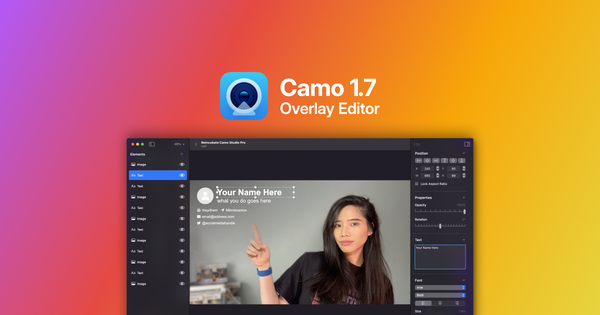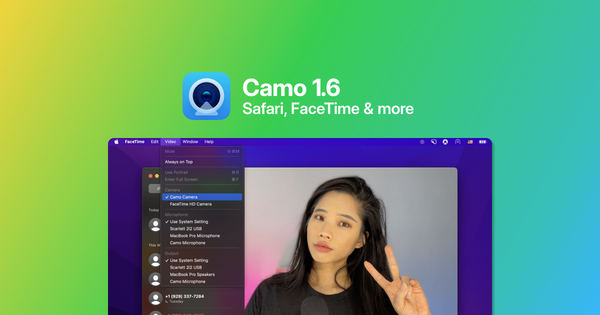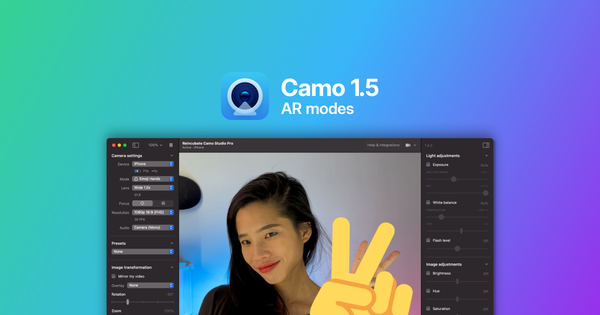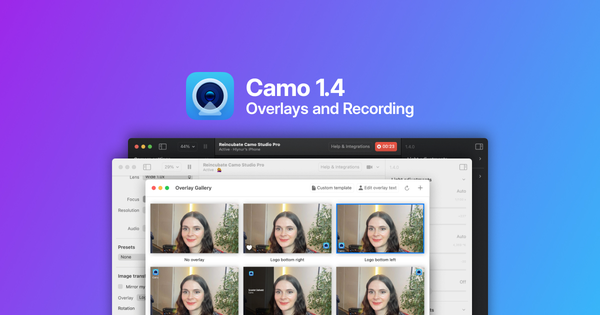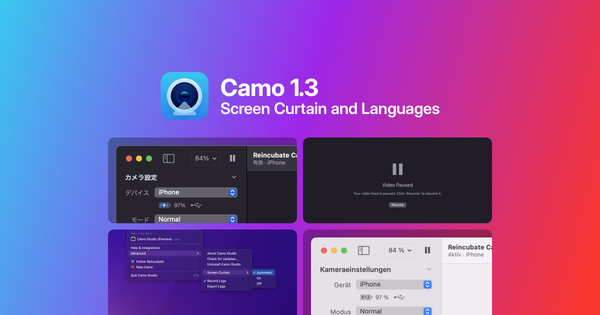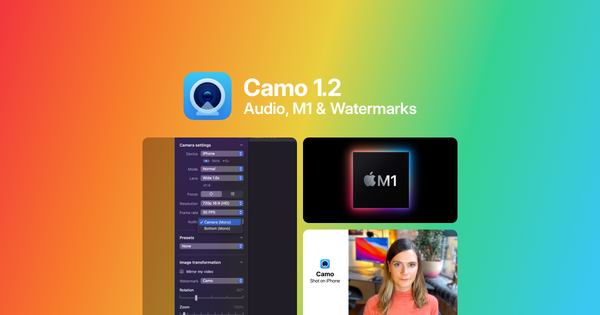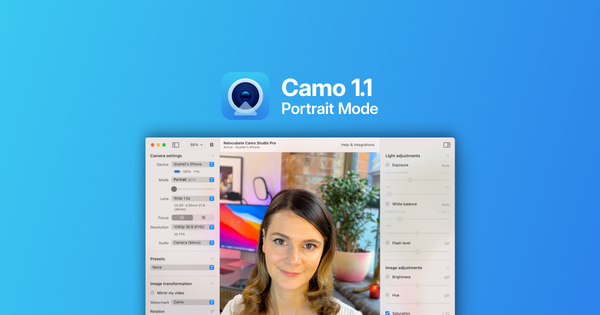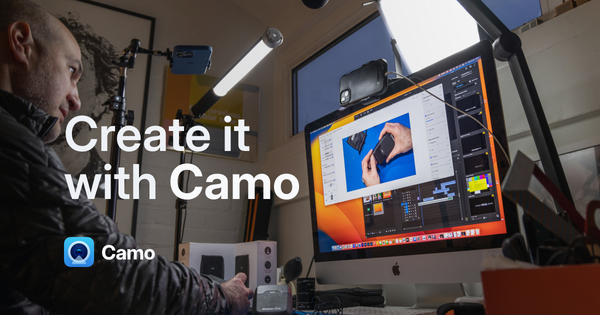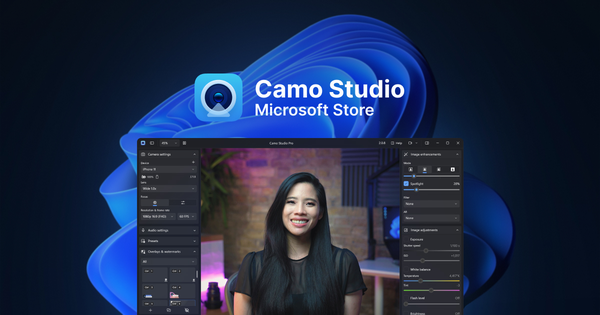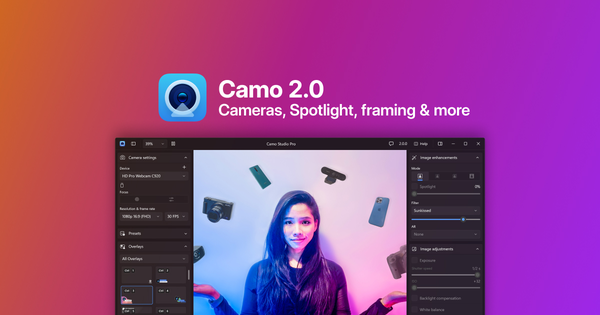Introducing Camo 1.9: Wi-Fi connectivity
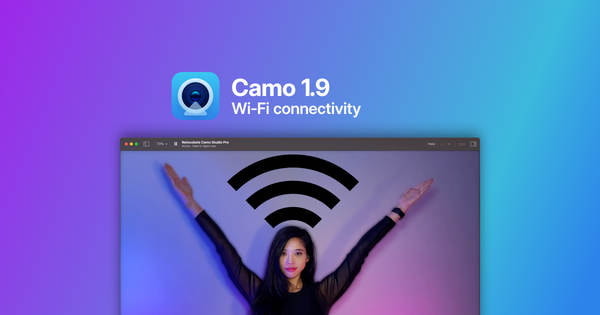
In our latest update, we’re pleased to be bringing Wi-Fi connectivity to Camo. Users will now have the choice of pairing their phone with Camo Studio through either Wi-Fi or USB, across any combination of macOS and Windows platforms with iOS and Android devices.
Connecting your device directly to your computer with a cable has been an easy and reliable way to use Camo. We still recommend that first-time users, as well as those looking for the smoothest video experience they can find, stick with a wired connection where possible. There are times, however, where the practical benefits and greater creative flexibility of going wireless will greatly outweigh the slight increase in video latency.
To make this happen, we designed a simple way to pair both iOS and Android devices with Camo Studio running on macOS or Windows – in any combination – using the 802.11 Wi-Fi standard. This makes Camo the most versatile app of its kind available today. Here’s how it works:
Making the most of Wi-Fi
We’ve already thought of a few use-cases for Camo’s new wireless functionality, and we anticipate our users will find it useful for a ton of different applications. For one, it shortens the time it takes to set up a phone for video calls, something busy professionals will appreciate. Not only does Wi-Fi mean one less wire to worry about, it’s also a good tool for those who hot-desk, spelling the end of searching for that extra cable in your bag or a free port to plug it into.
Thinking more creatively, untethering the phone from the computer opens up a lot of new possibilities when it comes to your setup – using Camo has never been more dynamic or adaptable.
First, Camo users are no longer limited by the length of their USB cable, and may instead make full use of Wi-Fi’s much greater range. Instead of remaining rooted to one spot on your desk, the phone can be moved from point to point while capturing video, or be mounted in places that would be difficult to reach with a cable.
Overhead and top-down shots become much easier to set up and execute, as are sequences in which the user wants to capture video at two different spots in a room, such as an opening shot at a desk for speaking directly to camera, with a second shot at a tabletop for a tutorial or product demonstration. It also facilitates multicam setups, now users can easily switch back and forth between two or more phones running Camo. And, it frees up the phone’s port to use a microphone – which Camo can use – or other peripherals.
These are only a few ideas, and we’re sure that the Camo community will find and share even more once they get their hands on it. We can’t wait to see what they do!
Go with Wi-Fi or stick with USB
Adding Wi-Fi connectivity to Camo is an important step in our development roadmap, further enabling our users to take their video above and beyond what was possible before – on all platforms, with a broad set of features, and world-class support. It also positions Camo as a powerful upgrade to macOS Ventura’s upcoming Continuity Camera (we’ve shared our thoughts on Continuity Camera before).
Users looking for the smoothest, most robust video production experience are likely to continue using USB for the foreseeable future. Wireless solutions are inherently more susceptible to latency and hitching – especially on platforms that are not optimised for high-bandwidth, real-time streaming. To meet our standards on macOS, for example, using Wi-Fi on Camo will add a small delay to incoming video in order to iron out any jitter introduced by the system, making it “stream-safe”. These are the kinds of issues we look forward to resolving as new capabilities become available.
Meanwhile, Wi-Fi connectivity is sure to be popular with our Android users, since they will no longer need to enable USB debugging mode when connecting the device to Camo Studio on Windows. This is a requirement of wired Android–Windows connections that wireless elegantly bypasses.
Wireless and more
Camo 1.9 also introduces an iPhone lockscreen widget that enables quicker access to the app, and adds Arabic to our growing list of supported languages (that’s twelve now, not counting English!).
These are all features available today – Wi-Fi pairing will work with iOS 13+ and macOS 10.15+, and on all Android and Windows versions that support Camo. The iPhone lockscreen widget, of course, will only work on iPhones running iOS 16.
Now back to work. Coming down the pipeline are some fantastic new capabilities, with a number of Camo enhancements that we’re truly excited about. In the meantime, thanks to all who continue to take part in this journey with us, and stay tuned for what’s next.

